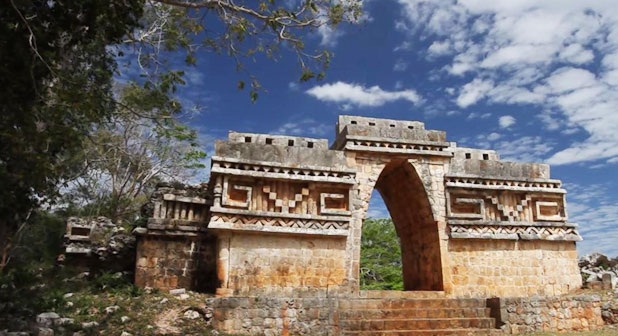Marketing Campaigns Going For The Luxury Market
Luxury travel sectors are distinguished by uniqueness, brand imagery and high price levels—the main guiding principles of the luxury sector—but they are also impacted by the same trends. The main trends characterizing the luxury travel sector are the development of personalised services, a move away from ostentation, the increasing importance of digital media, and progressively more attention to green and responsible social principles. Above all, as with the luxury sector in general, according to a recent study by the International Luxury Travel Market (ILTM), the demand for luxury travel is expected to grow, especially in relation to emerging economies, e.g., in the BRIC countries.
The perception of luxury is continuously evolving. Now we’re seeing a move away from ostentation toward authenticity in the travel experience, and a call for sustainability and environmental conservation as an integral part of the offerings for affluent travellers.
On the distribution side, the greater use of online tools will have an effect on the sales process and on communications. A shift towards a more self-sufficient approach in travel planning is therefore expected, plus increased influence by social media in the decision-making process. Let's see how some destinations have addressed these trends in their marketing activities.
Mexico to Use Maya Calendar as a Starter for Tourism
Hollywood depicts the Maya calendar's end as a cataclysmic event. But top Mexican tourism officials are betting an invitation to see Maya ruins will attract hordes of older, wealthier U.S. visitors.
In Mexico, where drug violence has hobbled the nation's $70-billion tourism industry, government leaders hope to counter Tinseltown's doomsday scenario by promoting 2012 as the year of the tourist.
Several of Mexico's top tourism officials have been making the rounds in their northern neighbor, betting that an invitation to see Maya ruins will attract hordes of older, wealthier U.S. visitors keen on Mexican culture.
Whereas the Hollywood blockbuster "2012" depicts the end of the Maya calendar as the spark of a global calamity, the Mexican campaign will include a countdown to the calendar's conclusion and urge tourists to visit archaeological sites in the states of Campeche, Chiapas, Yucatan, Quintana Roo and Tabasco.
The campaign is the latest effort by Mexico to overcome a steady stream of negative publicity over drug-related violence that has killed tens of thousands in that country and made many American tourists hesitant to venture south of the border.
U.S. travelers made up about 60% of Mexico's 22.4 million international visitors in 2010, according to Mexican authorities. When drug killings first began to dominate headlines in 2008, tourism to Mexico dropped steeply. But it has been rebounding slowly ever since, mostly because of international visitors from countries other than the United States.
From January to May, the number of international visitors to Mexico grew 2.1% compared with the same period in 2010, according to the tourism board. During that time, the numbers of tourists from such countries as Brazil, Russia and China have grown by double digits, the board says. Meanwhile, U.S. tourism to Mexico remained mostly flat, according to the U.S. Department of Commerce.
In an effort to deflect attention away from the violence, Mexico's tourism secretary, Gloria Guevara, and the governors of several Mexican states joined the recent swing through the U.S. to promote their country's historical destinations, particularly 10 Maya archaeological sites in five Mexican states.
Source: articles.latimes.comTourism Australia Targets Affluent Asians
The Australian Tourism Directions Conference was also told a 10 year strategic plan would be drawn up to attract wealthy middle-class holiday makers from India. Tourism Australia chairman Geoff Dixon told delegates the challenge was to send a unified image of what's on offer "down under".
"I believe our current marketing ... particularly in the digital and social media spaces, is working outstandingly well for the industry," he said. "Australia is a five star, must-see destination with some of the world's best natural and man-made attractions. "Tourism Australia is unashamedly going to target the high-yield traveller in a new multi-faceted campaign now under planning for release in 2012.
"In the past our marketing has been far more generic and this will continue, but alongside a message of high quality and unsurpassed natural beauty." Mr Dixon said the campaign would highlight world best attractions in Australia including luxury lodges, hotels and facilities, food and wine and natural wonders, but the message would have to be uncluttered and clear.
He said Tourism Australia had been told in no uncertain terms during recent trips to China and India that Australia spoke with too many voices. "Tourism Australia, the states and territories, airlines and private business all have legitimate messages but finite resources to spend in what is increasingly a cluttered market," he said. "I strongly believe we would be better heard, particularly in Asia, with a clarity of marketing message through the one voice, in which some of our great experiences would be better segmented and told, helping disperse our international visitors right around the country." Mr Dixon said there was already close co-operation between his body and the states, but that could be taken a step further to achieve better outcomes which would bring long term benefits to the industry.
Tourism Australia managing director Andrew McEvoy said the 10 year plan for India would focus on how to capitalise on what will be one of the world's most massive outbound markets of 50 million travellers in the next decade. "It's the biggest English speaking country upon Earth," he said. "It's a young audience, with 62 per cent of people under the age of 26. They are an adventurous growing middle class who want to put travel and destinations like Australia on life's resume."
Tourism Minister Martin Ferguson said it was essential for the industry to work together on its international marketing campaign. "More strategic co-operation is more important than ever". "Team Australia domestically and internationally, but we'll still have competition for business, sporting events etc. between states. "I think that's healthy for the industry and keeps every state and territory on its toes and means we've got people chasing business internationally."
New Zealand Invites U.S for Lifetime Memories
A new general marketing campaign was launched in the United States, asking Americans to consider New Zealand as a wonderful place to create lifetime memories during the southern summer months.

The campaign extends the 100% Pure You brand into online video for the US market. The videos feature 'flashbacks' to show how an everyday moment can encourage lifelong memories of a great New Zealand holiday experience. One of the videos includes Air New Zealand as a key partner, featuring their new premium long-haul product within the advertisement.
In addition to the video advertisements, rich media and flash banners are being used. A landing page has been built on newzealand.com which features all three advertisements, an image slideshow and partner travel deals.
Tourism New Zealand General Manager Marketing Communications Justin Watson says this campaign is part of Tourism New Zealand's international focus to promote New Zealand as a fantastic destination in its spring and summer months. "We're working with our industry partners to provide some really attractive offers which show that the experiences to be had in New Zealand really can last a lifetime."
The lifetime memories campaign includes media placements and significant destination content through newzealand.com where the site features an image slideshow and partner travel deals. The United States is one of New Zealand's key international tourism markets with 186,662 visitor arrivals for year end July 2011.
In addition, the forecasts show strong growth from China and promising emerging markets like Malaysia. "Tourism spending overall is expected to be roughly stable in real terms, increasing to 6.6 billion NZ dollars in 2016."
New Zealand has been marketing itself strongly as a tourism destination in China. The national tourism agency, Tourism New Zealand, has signed up award winning Chinese film and television star Yao Chen as a brand ambassador for the country. In June, the agency signed up to a major promotional blitz with 10 Chinese travel companies in a campaign to encourage Chinese travelers to step off the track beaten by organized tour operators for more individual and adventure-based itineraries.



COMMENTS
AuthencticTravel Corp
Good document and information. Its really interesting to know how the travel industry incomes are worldwide
First Logic
Great Article ! Find another angle on the subject and its influence in the economic environment in http://bit.ly/pDkgoU